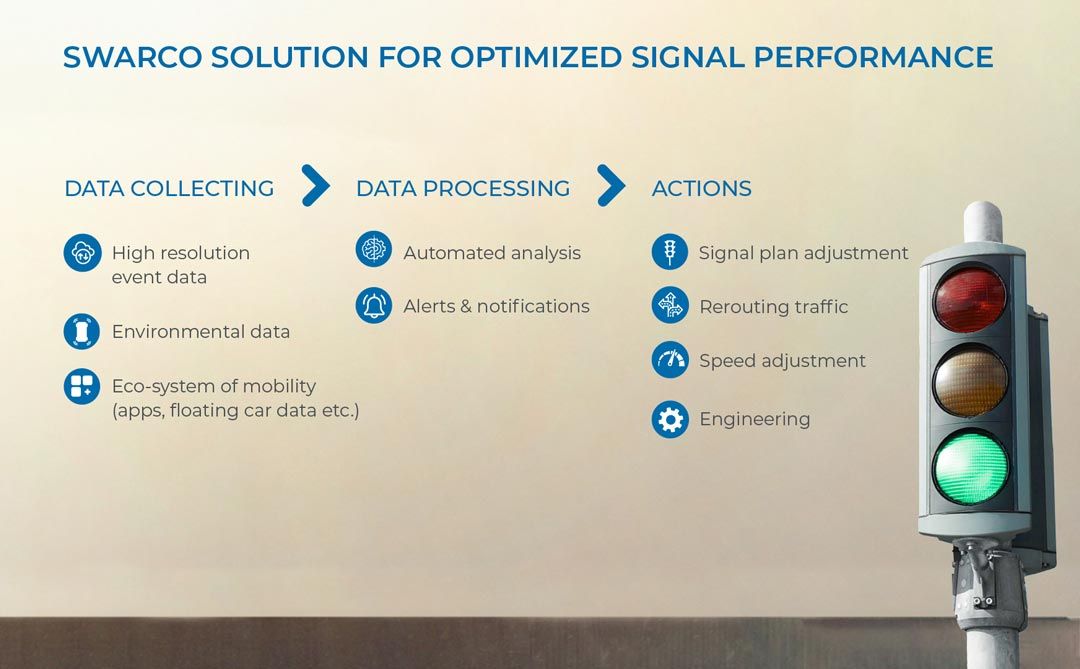SWARCO Ensures Optimum Signal Performance – automatically
Many traffic fatalities and injuries occur at intersections, often as a result of traffic-signal malfunctions. However, many cities today only know about traffic-signal failures by reacting to public complaints instead of getting instant alerts in a modern traffic-management system. This means that a signal might be down for hours or even days before the issue is dealt with.
Manual workflows overload the available personnel resources of traffic departments, which increases the downtime of traffic signal systems and prevents an optimum overall signal performance.
The Challenge
- 25% of traffic fatalities and roughly 50% of traffic-related injuries occur at intersections.
- Signal-management activities focus on reacting to public complaints, preventative maintenance, and retiming.
- Signal phases are only updated every 3–5 years.
- Manual analysis of signal performance is time-consuming and inefficient and does not allow signal performance to be optimised.
- Lack of engineering: there are too few engineers to complete large-scale investments of local, national, and
international importance
Current Tools don't support today's needs
- In-depth analysis missing from central traffic management systems.
- Lots of maintenance required.
- Slow response time when immediate action is required, such as equipment failure or unexpected events like an accident or flooding.
- Current practices for many cities rely on manual techniques.

The Solution by SWARCO
Data collection:
The first step towards tackling the lack of skilled resources is to collect all relevant data. SWARCO’s
eco-system of mobility with deep integration of all types of data sources allows you to automate
and optimize your workflows.
Data processing:
The data is then stored and processed via SWARCO’s mobility management system before
being analyzed to get a picture of your city‘s current traffic signal performance status. The automated and in-depth analysis will quickly and precisely indicate the problem areas. This solution
transforms the typical report-centric user experience by automatically monitoring signal
performance and only notifying operatives when action is needed.
Cost savings and planning:
As the system is automated, you will benefit from cost savings, and you will be able to make
plans that use your precious resources more effectively.
Efficient management:
These plans could include, for example, automated or manual signal changes to improve traffic
flows in busy areas. Similarly, you could plan to use signal changes to re-route traffic when
you know in advance that traffic flows will be heavy at certain times and places, like during a
major sporting event. Signal changes can also be used to regulate traffic speeds to improve
traffic flows and reduce CO2 emissions by slowing down vehicles on your city‘s roads. SWARCO’s
traffic engineering tools support you to plan, simulate, test, and evaluate your efforts and
provide you with guidance on managing your resources efficiently.
Holistic Urban Mobility Management by SWARCO
GET IN TOUCH!
Would you like to further develop your urban mobility management, increase efficiency and make cities more liveable for everyone? Whether it's about fundamental questions or a specific project, whether you want an informative meeting or a demo, we are at your disposal with our know-how. Just fill out the form below and we will get back to you promptly.